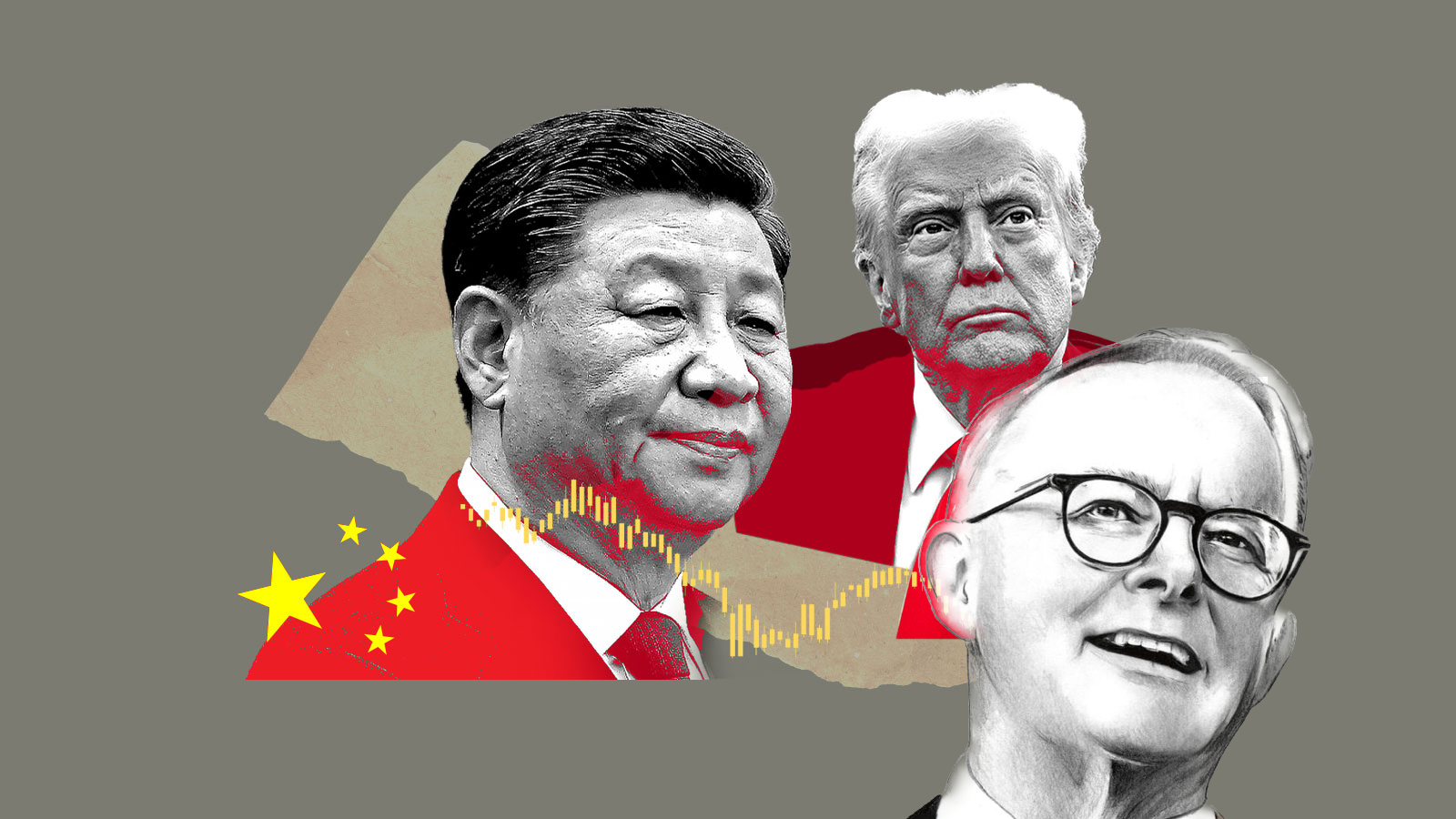China's Minerals Decade
The West scrambles to match China’s critical minerals power. © Under Licence: Visual China Group (VCG)
❮ VSG News
OPINION
The West's new pacts acknowledge, but cannot quickly undo, China's long-term strategic dominance of the entire critical minerals value chain.
★ Article by Arno Saffran, Tue 04 Nov, 2025The Strategic Reality of Critical Minerals
The recent joint US and Australia critical minerals agreement represents less a strategic breakthrough than a reluctant admission. Western governments have finally acknowledged their vulnerability, but in doing so, they reveal a fundamental misunderstanding of China's advantage. What they perceive as a problem to be solved—China's dominance across the critical minerals spectrum—is in fact the logical outcome of a masterfully executed long-term strategy.
China's position—commanding over 90% of global refined rare earths and graphite, along with decisive shares of lithium and cobalt processing—wasn't achieved through market manipulation or predatory tactics. It emerged through decades of disciplined investment in what might be called "full-spectrum industrial architecture." While Western capital markets chased quarterly returns, China was building the foundational infrastructure for 21st-century economic leadership, creating an integrated system from mine to magnet to manufacturing.
The Gravity of Established Advantage
The $2.2 billion in initial funding for Australian projects, while substantial, confronts what might be termed "economic gravity." New ventures like Arafura Rare Earths must compete not just with Chinese companies, but with an entire ecosystem—one characterised by unparalleled scale, deeply embedded expertise, and relentless efficiency. As one mining executive observed at the recent FT Mining Summit, "We are blaming China right now, but they had a long-term view that we didn't have 15-20 years ago."
This advantage extends beyond simple production costs. Alex Pickard of Ivanhoe Mines, which partnered with China's Zijin Mining to develop the massive Kamoa-Kakula copper project, notes that Chinese partners have been "the most efficient allocators of capital to the mining sector for the past 15-20 years." The result: projects that might take Western companies a decade can be operational in half the time.
The Pragmatism of Necessary Partnership
What emerges from industry conversations is a stark reality: the West's attempt to build parallel supply chains represents not just an economic challenge, but a conceptual failure. The new Australia-US framework, with its closed-loop approach and accelerated permitting, attempts to replicate China's model in haste—and reveals its own contradictions by simultaneously seeking to wall off Chinese investment while racing to match Chinese efficiency.
Meanwhile, forward-thinking executives understand that engagement, not isolation, defines the path forward. "You have to have a degree of pragmatism," says IGO CEO Michael Nousa, whose company operates the massive Greenbushes lithium mine in partnership with China's Tianqi Lithium. "Ultimately, the transition cannot occur without China."
This pragmatism reflects a deeper understanding: as Syrah Resources CEO Shaun Verner notes, while 65% of mined graphite comes from China, "100% of processed spherical graphite comes from China today." The mid-stream processing dominance is so complete that even successful Western mining projects remain dependent on Chinese refinement capabilities.
Navigating the New Reality
For business leaders, this landscape demands a sophisticated approach to partnership and negotiation:
First, recognize that value creation trumps political positioning. The most successful partnerships, like Ivanhoe's with Zijin, leverage complementary strengths rather than attempting to replicate entire supply chains.
Second, structure relationships for stability, not just transaction. Long-term offtake agreements paired with strategic equity investments can create mutual dependency that withstands geopolitical turbulence.
Third, embrace what might be called "strategic intermediation"—positioning operations to bridge Chinese efficiency and Western markets. As one executive noted, Australia is "treading a more careful path" than other Western nations, recognizing that geographic and economic reality demands engagement.
The West's new mineral pacts represent necessary steps toward supply chain resilience, but they remain exactly that: first steps in a race where China holds not just a lead, but has effectively designed the track itself. The most successful enterprises will be those that understand China's dominance as a structural feature of the global economy—not as a problem to be solved, but as a reality to be navigated with strategic sophistication and commercial pragmatism.
CN
美澳关键矿物协议:一次迟来的觉醒与认知鸿沟
近日达成的美澳关键矿物协议,与其说是战略突破,不如说是西方不情愿的承认。各国政府终于认识到自身的脆弱性,但此举反而暴露了对中国优势的根本性误判。在他们眼中需要解决的问题——中国在全产业链关键矿物领域的主导地位——实际上是一个经过精心布局的长期战略必然结果。
中国掌控全球90%以上精炼稀土和石墨产能,并在锂钴加工领域占据决定性份额,这一地位并非通过市场操纵或掠夺性 tactics 获得,而是源于数十年如一日对"全频谱产业架构"的持续投入。当西方资本市场追逐季度回报时,中国正在为21世纪经济领导地位奠定基础设施,构建从矿山到磁铁再到制造的完整产业生态。
既定优势的引力场
尽管澳大利亚项目获得的22亿美元初始资金规模可观,但它需要对抗的是可称为"经济引力"的现实。像Arafura稀土这样的新项目,不仅要与中国企业竞争,更要与一个具有无与伦比规模效应、深厚技术积累和极致效率的完整生态系统竞争。正如一位矿业高管在近期英国《金融时报》矿业峰会上所言:"我们现在指责中国,但他们在15-20年前就具备了我们所缺乏的长远眼光。"
这种优势远不止于生产成本。与紫金矿业合作开发卡莫阿-卡库拉巨型铜矿的艾芬豪矿业高管亚历克斯·皮卡德指出,过去15-20年间,中国合作伙伴始终是"矿业领域最高效的资本配置者"。其结果就是:西方企业需要十年完成的项目,中国伙伴能在半数时间内实现投产。
必要合作的务实选择
行业对话揭示出一个鲜明现实:西方试图构建平行供应链不仅面临经济挑战,更暴露出认知层面的缺陷。美澳新框架试图通过闭环模式和加速审批来匆忙复制中国模式,却在排斥中国投资与追赶中国效率之间陷入自相矛盾。
与此同时,具远见的管理层深知,合作而非隔离才是未来之路。IGO首席执行官迈克尔·诺萨坦言:"必须保持一定程度的务实态度,最终没有中国参与,能源转型不可能实现。"其公司与天齐锂业合作运营全球最大的格林布什锂矿。
这种务实态度反映了更深层的认知:正如Syrah资源公司首席执行官肖恩·弗纳所指,虽然65%的石墨原料产自中国,"但当前100%的球形石墨加工都来自中国"。中国在中游加工领域的统治地位如此彻底,以至于西方成功的采矿项目仍依赖中国的精炼能力。
驾驭新现实的战略智慧
对企业领袖而言,这一格局要求以更成熟的思维看待合作与谈判:
首先,认清价值创造优于政治站队。最成功的合作,如艾芬豪与紫金的伙伴关系,在于优势互补而非全产业链复制。
其次,构建着眼于稳定性的合作关系。长期承购协议与战略性股权投资相结合,能建立抵御地缘政治风浪的相互依存关系。
第三,善用"战略中介"定位——将业务定位于连接中国效率与西方市场的桥梁。正如一位高管所言,澳大利亚正在"走一条比其他国家更审慎的道路",承认地理与经济现实要求必须保持合作。
西方的新矿物协议确实是构建供应链韧性的必要举措,但也仅止于此:在这场中国不仅领先而且实际设计了赛道的竞赛中,这些只是起步动作。最成功的企业将是那些将中国主导地位视为全球经济结构性特征的理解者——这不是个待解决的问题,而是需要以战略智慧和商业务实来驾驭的现实。
References
How relevant and useful is this article for you?
★ ★ ★ ★ ☆ 12
ABOUT THE AUTHOR(S)
— Arno Saffran
Arno developed his approach through roles in client development (KPMG) and strategic commercial engagement (affiliated with advisories including Hakluyt), focusing on complex industrial and energy sectors.
VSG works across the extractive value chain, positioning people who form the critical bridge to early-stage relationships and commercial access in complex markets.
